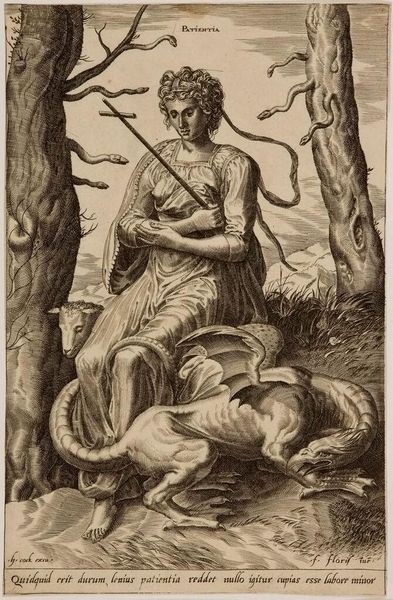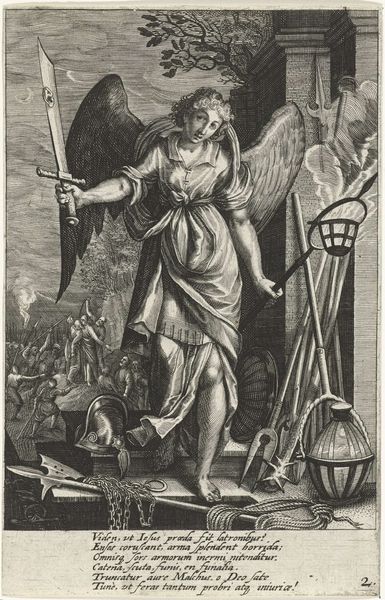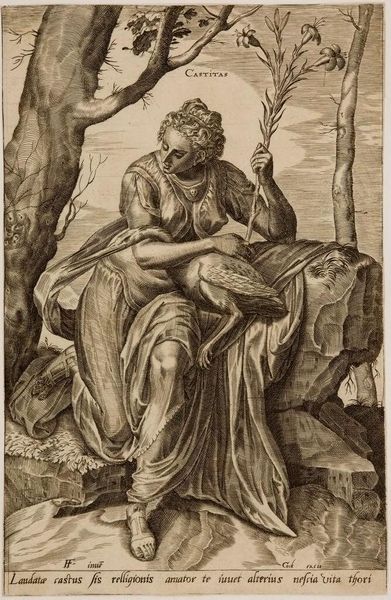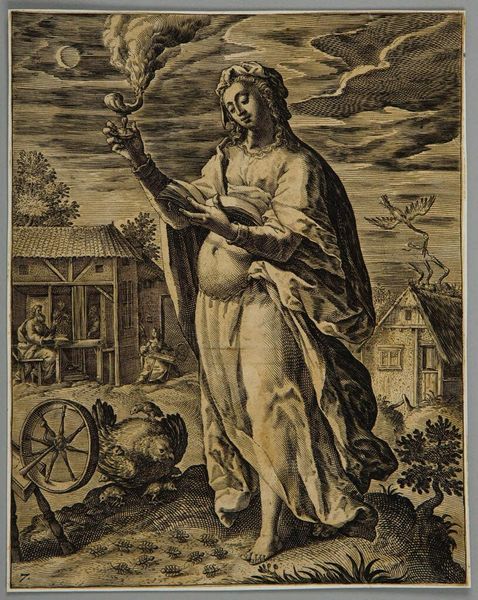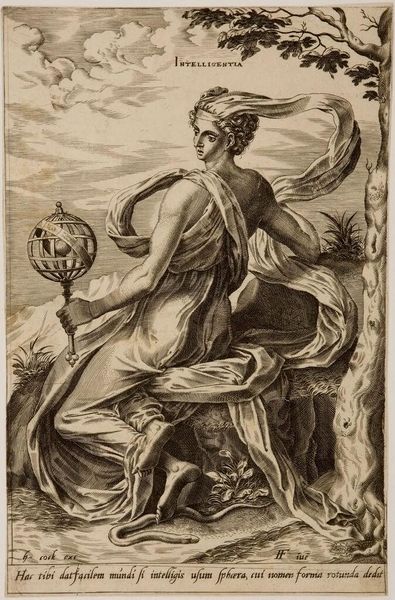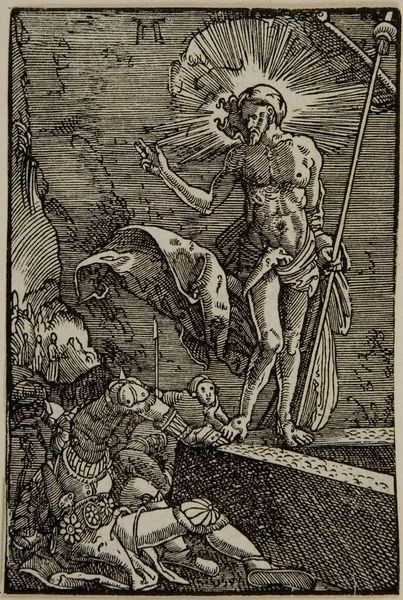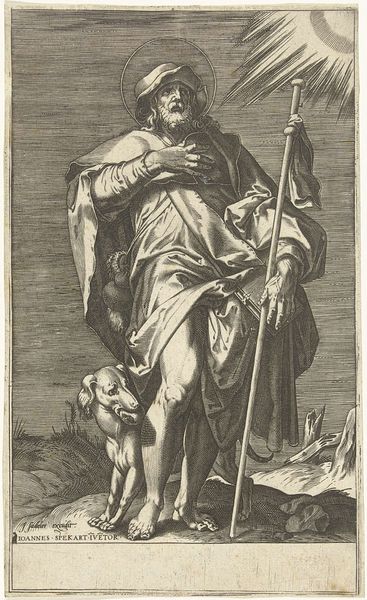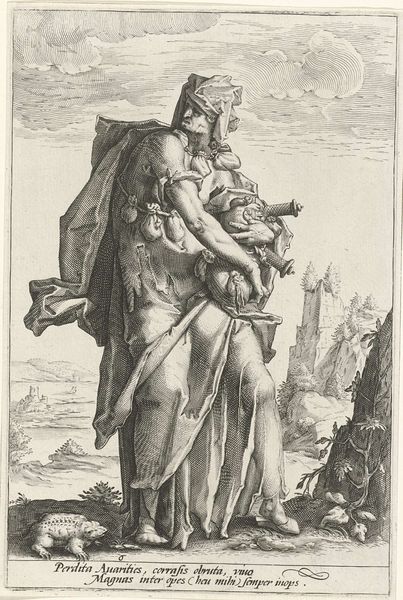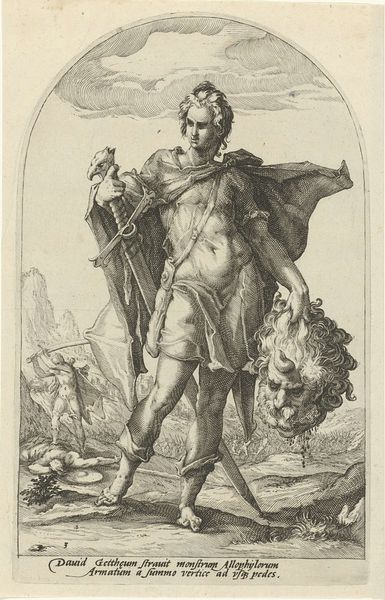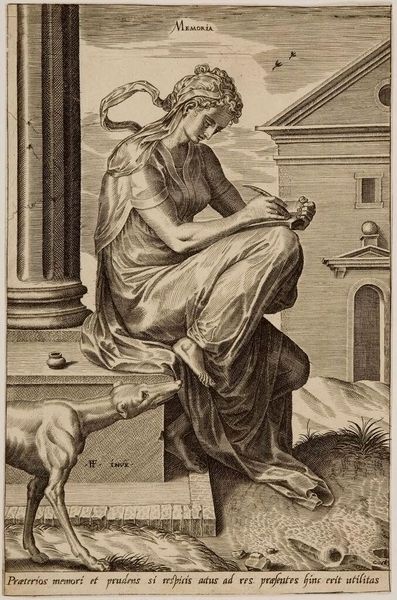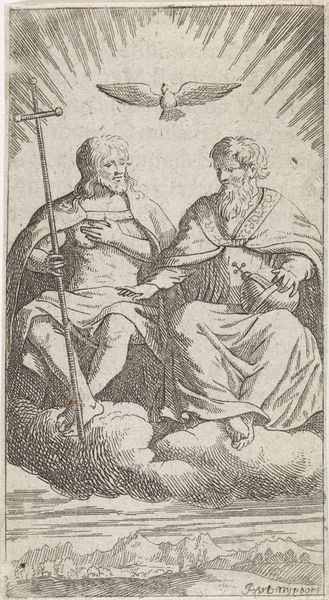
Copyright: CC0 1.0
Curator: This engraving, titled "Goddesses and Nymphs of the Fields: Pales," was created by Cornelis Cort sometime in the late 16th century. It's currently part of the Harvard Art Museums collection. Editor: It has an air of melancholy about it, doesn’t it? The goddess looks… burdened, almost. Curator: Well, Pales was the Roman goddess of shepherds, flocks, and livestock. Cort emphasizes her connection to the land—note the tools, the ox. She embodies pastoral life. Editor: That ox looks like it's about to fall asleep on the job! But seriously, the inclusion of these agricultural symbols—the rake, the pitchfork— they root the goddess in the everyday labors of rural life. She's not just a deity; she's a worker. Curator: Exactly! And look at the details in her straw hat and braided hair. It lends a sense of immediacy and presence. Editor: It’s a nice reminder that even goddesses have their work cut out for them. Curator: Indeed, and a beautiful reflection on the sacredness of the ordinary.
Comments
No comments
Be the first to comment and join the conversation on the ultimate creative platform.


